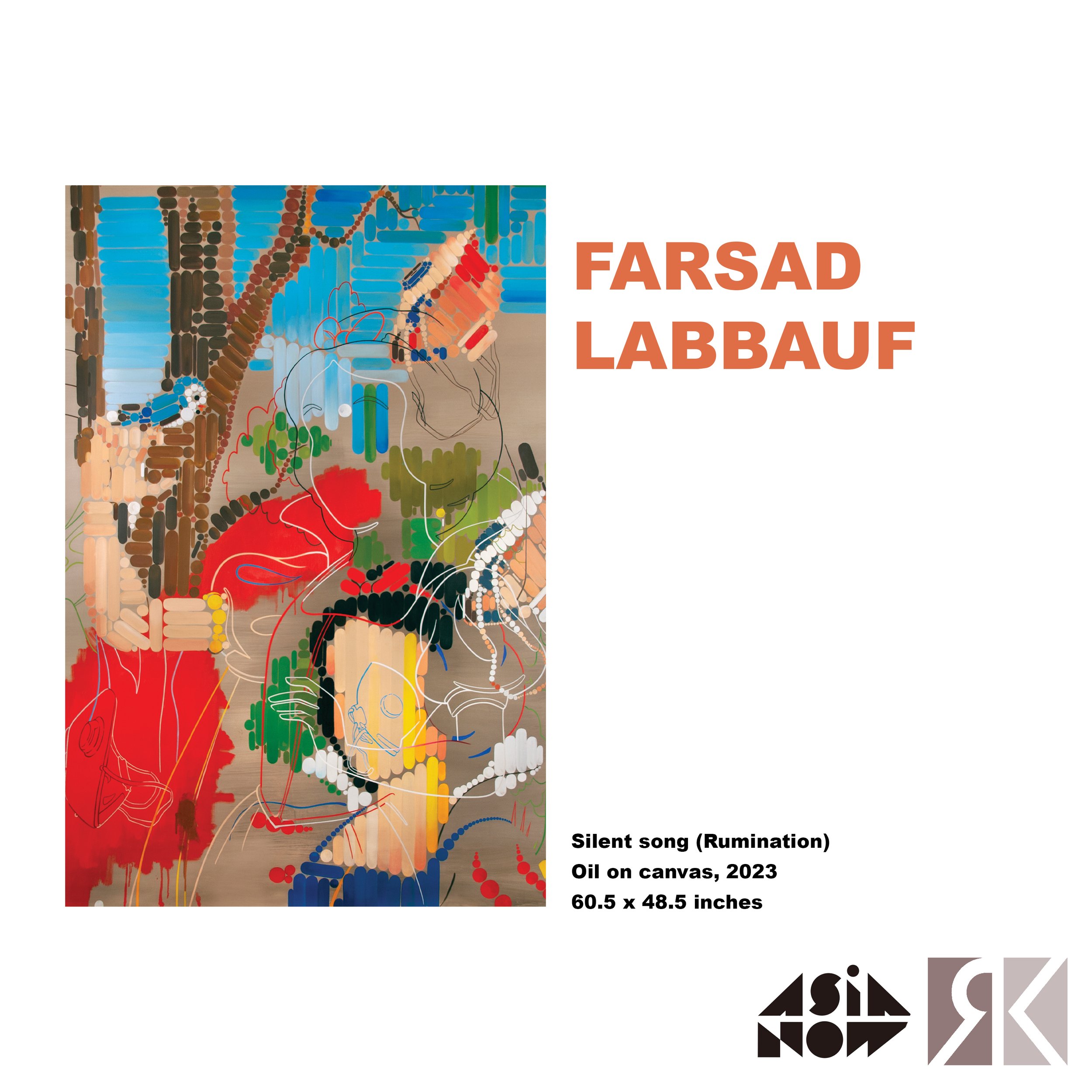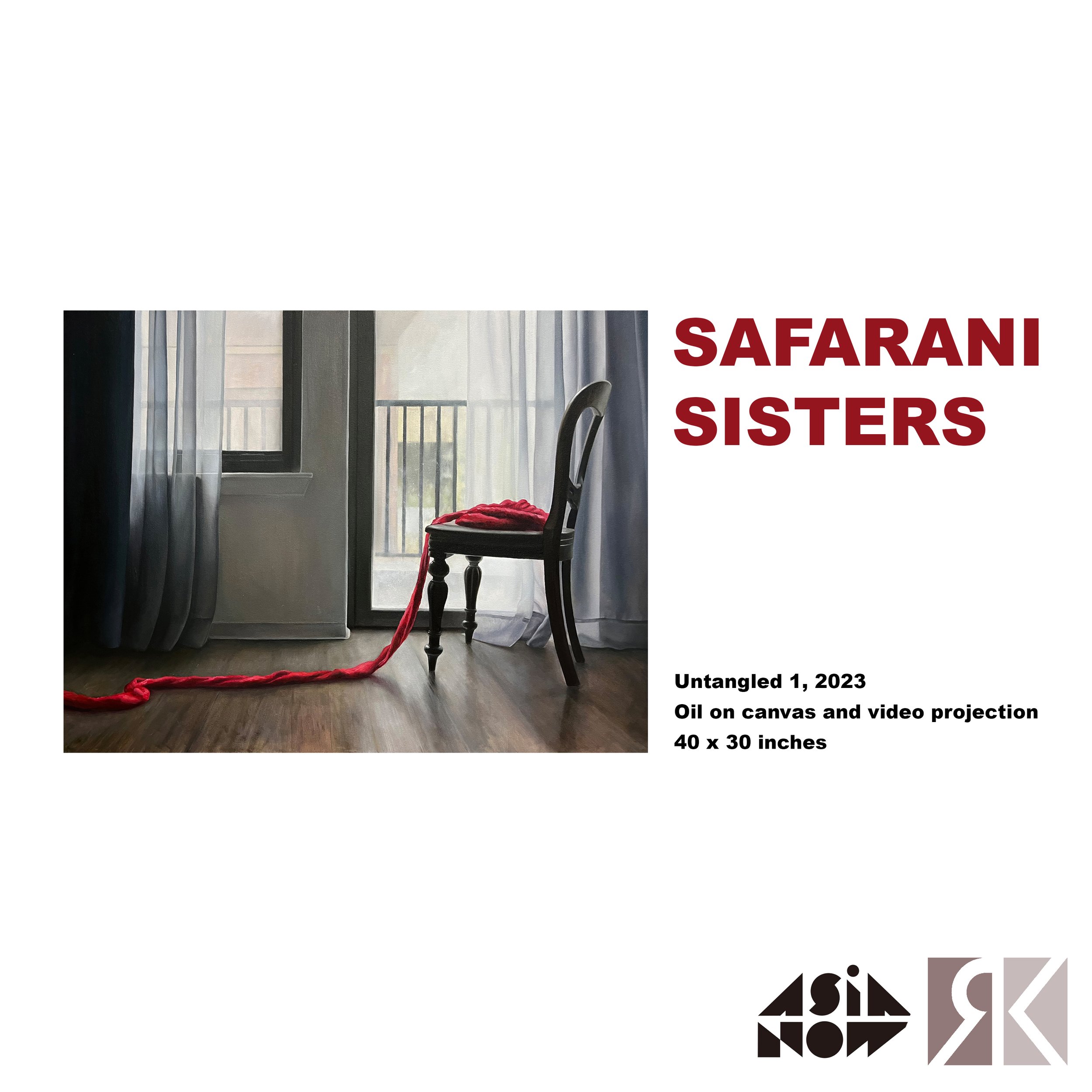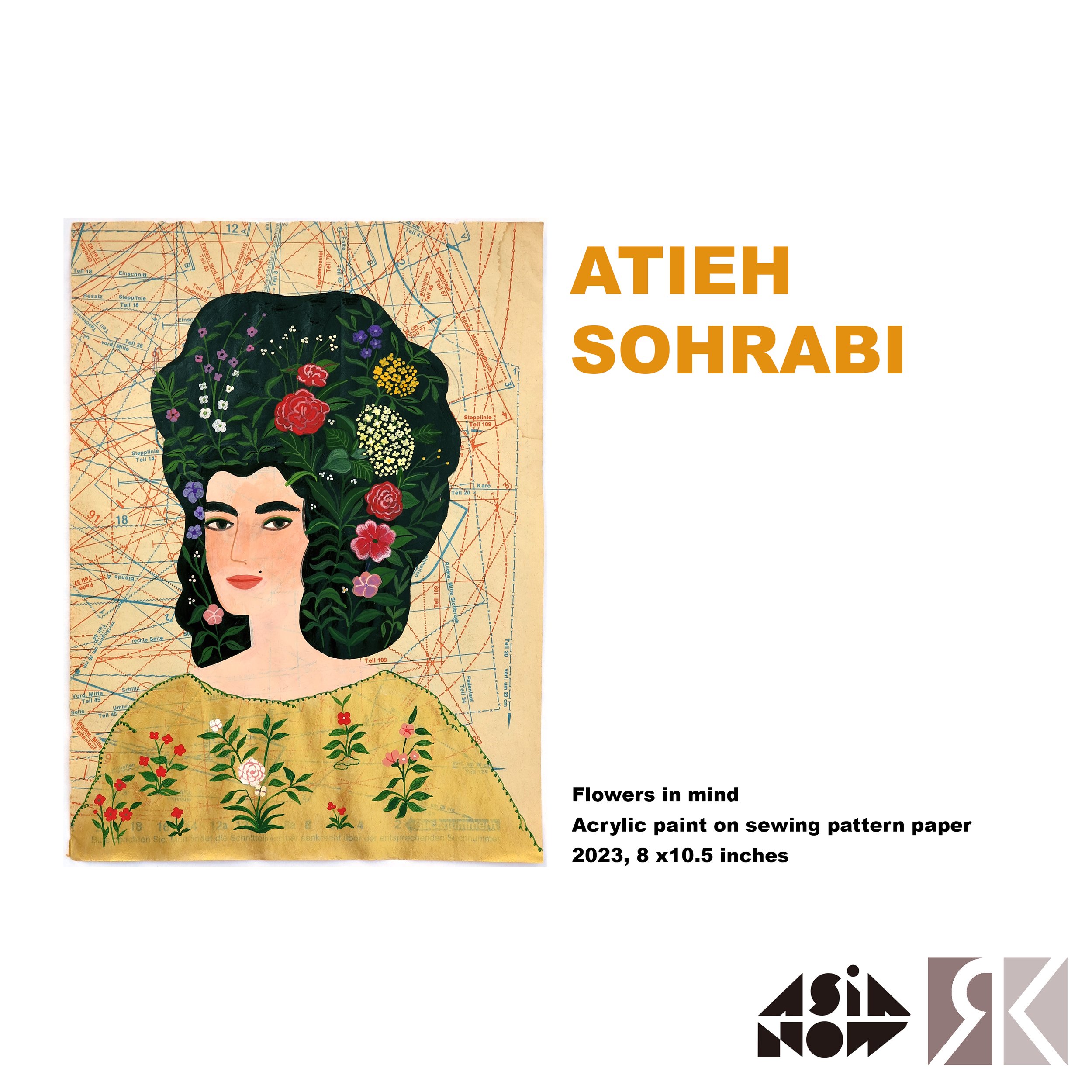ASIA NOW 9th Edition
ROYA KHADJAVI PROJECTS IS PLEASED TO PARTICIPATE IN PARIS ASIAN ART FAIR, ASIA NOW 2023
Roya Khadjavi Projects brings together works by six Iranian artists Dana Nehdaran, Atieh Sohrabi, Farsad Labbauf, Negin Mahzoun and The Safarani Sisters ( Bahareh and Farzaneh). Working in a multitude of mediums, these figurative artists, address social and political issues which have challenged their generation from the past to the contemporary moment. Their subjects are sophisticated, and their visual vocabulary laced with metaphor and satire. Through their works, they explore the sense of self and identity, investigate social and cultural trauma, address historical and western influences that have derailed the political and economic direction of their country, causing fear and anxiety and an intense feeling of claustrophobia.
Asia NOW will celebrate its 9th edition from October 20-22, 2023, preview on October 19.
at Monnaie de Paris, 11 quai de Conti. (Pavilion Mansart)
Farsad Labbauf is a multidisciplinary Iranian artist living and working in the New York area. Best known for his linear figurative paintings, Labbauf immigrated to the United States at the age of thirteen. After enrolling in Rhode Island School of Design in 1982, he received his Bachelor of Fine Arts, followed by a second degree in Industrial Design. The origins of Labbauf’s work lie in Figurative Expressionism, a style he practiced for more than two decades leading to the creation of his linear figurative painting style. Subject matters in his work have ranged from explorations of personal and cultural history through portraiture, battlefields, narratives of Iranian oil industry and its history of exploitation in addition to the role of western animation and iconography in altering paths of existing psychosocial systems. His works have been featured in more than sixty group shows across the globe, including the Saatchi Gallery in London, Leslie Lohman Museum in New York, Ex Aurum Museum in Pescara, Italy, as well as The Jersey City Museum in New Jersey. Additionally, he has held solo exhibitions in New York, Boston, Amsterdam and Tehran. Labbauf's work can be found in numerous public and private collections including The Salsali Museum, The Afkhami Collection, The Saatchi Gallery and The Newark Museum of Art as well as Carsten de Boer and Lie Sang Bong art collections. His work is currently represented by Roya Khadjavi Projects in New York and Etemad Gallery in Iran.
Negin Mahzoun is an artist based in New York. Her practice focuses on observation, memory, and gender. She explores these issues through her personal experiences and cultural identity. Negin looks at the woman's body as an object and subject with the perspective of self-portrait and layers of history and literature. She uses images in miniature paintings as a reference for self-portraits. In addition, she expresses her work through sculptures, installations, paintings, prints, photography, and textile. In her current practice, she uses sewing, which connects her to her family's professional heritage. Textile has been historically used as a surreptitious tool to depict trauma and transmit intimate emotional and psychological visual narratives. Investigating the consequences of social-cultural trauma and its injurious impact on the body and psyche has been a central core of Negin's practice. Stitching and sewing for Negin are the essential elements to bond her sentiments and materials to convey remembrance through the hands, craft, and textiles. She starts with a self-portrait on the fabric and proceeds to stitch repeatedly until the image fades. The repetitive act of damaging the self-portrait with a needle and simultaneously covering it is a metaphor for self-destruction often associated with those suffering from trauma. Negin uses textile as a medium of communicating trauma, with a fresh approach, to visualize the story of oppression and share the trauma as a novel treatment.
Dana Nehdaran, an Iranian American artist, studied painting at the Soureh Art University in Shiraz. Prior to studying painting, Dana spent 2 years studying rug design in Isfahan, arguably the rug capital of the world. His family, home, and culture have provided continual fodder for his work. While living in Tehran, his series of Esther’s Children, a show of figurative oils capturing images of Iranian Jews from the late nineteenth century was shown to wide acclaim, with the series now being in both private and public collections. In addition to his figurative work, he has developed several abstract series, including Fe26, focusing on the materials of iron, copper, silver, and gold while manipulating their oxidation for art. Of the more than ten series Dana has created all focus on two primary themes: (1) tension between past and present; and (2) concealment and revelation. Both of these themes are present in every moment and culture as the tension between each is the genesis of the conversation of understanding. He has had 6 solo exhibitions and more than 50 group exhibitions worldwide, including Roya Khadjavi projects in New York and by galleries in Tehran, Dubai, Los Angeles, and New Orleans. He has also been a member of the Iranian Painter Association since 2007 and currently lives and works in New York.
Twin sisters Farzaneh and Bahareh Safarani (born in Tehran, Iran; 1990) work together in collaboration to create their striking paintings and videos. The two sisters make dramatic compositions of themselves as the subjects to explore to sense of self in relation to the other. The Safarani sisters choose to incorporate themes and symbols in their work. A major theme that the sisters address is one of identity—as twins, as individuals, and as Iranian women. Furthermore, the sisters usually depict interior scenes that serve as a haven for the women, with the walls and empty spaces acting as a barrier between themselves and the outside world. Common features found in these rooms are mirrors and windows with curtains. The mirrors symbolize how the subjects self-reflect and envision themselves in other worlds or realities, while the half- drawn curtains represent how the women hesitate to make full contact with the outside world. However, any breeze or light that comes through the windows represent the hope that the real world is free, peaceful, and safe, like their walls. With their combination of videos and paintings, and themes of identity and beauty, the Safarani sisters explain that through their art, “we are creating a beautiful moment which remains in the mind of the viewer...this moment is temporary—it comes and goes, just as our lives in this world.”
Atieh Sohrabi was born (1976) and raised in Tehran, and currently living in New York City, freelance Illustrator and Artist, Atieh Sohrabi, started her carrier in 2001 by choosing Industrial Design as her major in Azad Art University. As she became more familiar with the art world, she decided to switch to a new path in illustrations. She moved from Tehran to New York in 2015. Atieh's books have been selected by different exhibitions and museums around the world; for instance, Biennale of Illustrations Bratislava, Biennale of Illustration Golden Pen Belgrade, 24th BIB Exhibition in Hiratsuka Art Museum, Kawara Museum of Takahama City Chiba City Museum of Art, Ashikaga Museum of Art, Urawa Art Museum in Japan, The Tehran International Biennale Illustration, and LACMA (Los Angeles County Museum). In 2020, her paintings were curated by Roya khadjavi in two group shows which were held in Highline gallery, New York, and five pieces of the show were selected by Communication Arts Magazine, and she achieved the 2022 Award of Excellence. She was selected by Meta Platforms, Inc (IG&FB) as a Persian artist to create stickers for celebrating Nowruz (Persian new year) in 2022. One of her pieces is included in the “Women Defining Women in Contemporary Art of the Middle East and Beyond” Group show, curated by Linda Komaroff in LACMA museum in 2023.






